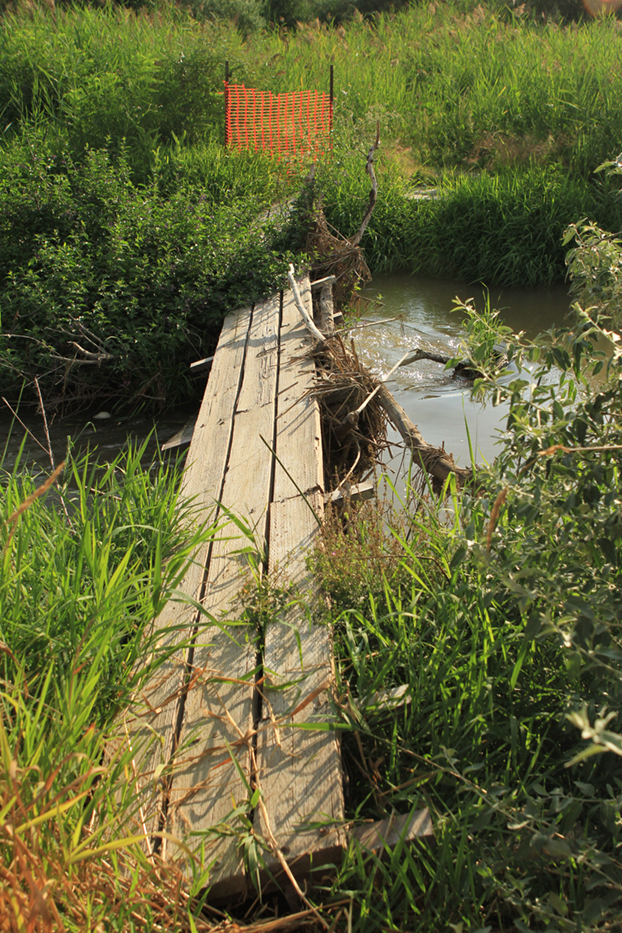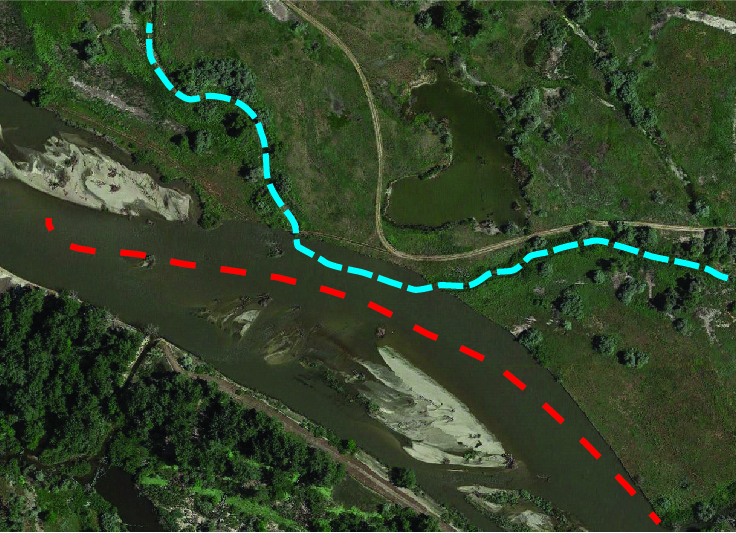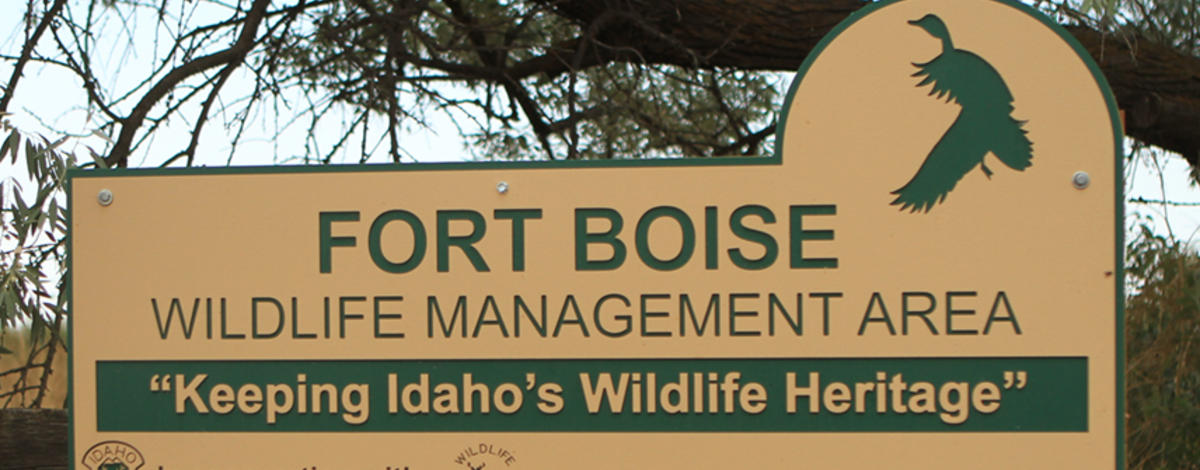WMA crew continues to repair damage caused by spring flooding
Both upland and waterfowl hunters may notice some things amiss at Ft. Boise Wildlife Management Area (WMA) this hunting season. But not as much as they might were they to visit the WMA today.

The main road through Ft. Boise WMA remains under repair. When spring flows
swelled Sand Hollow Creek, the water quickly cut a large gash in the main roadway.
Located at the confluence of the Boise and Snake Rivers just northwest of Parma, the WMA took a beating this past year, not so much from the heavy snowfall, but rather the floodwaters that came in the aftermath. When spring snowmelt swelled the Boise River to flood stage, the river quickly overflowed its banks; a portion of that floodwater found its way into Sand Hollow Creek, the WMA’s aquatic artery.

Sand Hollow Creek flows placidly through Ft. Boise WMA. But evidence of spring flooding remains. Note the washout hole in the bridge.
For weeks, Sand Hollow raged, flooding much of the WMA. Where water had a chance to spread out and lose its velocity, little evidence of flooding remains. But the WMA’s aged infrastructure adjacent to Sand Hollow Creek fared much worse. The flows put two footbridges out of commission, sliced through a roadway where an 18-inch culvert was normally adequate to carry water under the road, and scraped a nasty four-foot-deep gash in the roadway leading to a popular boat launch on the Snake River.
Not to be outdone, the Boise River did its share of erosion work, carving out several tons of riverbank and obliterating a WMA water delivery system in the process. It was this delivery system that routinely filled both Ralph’s and Teal Ponds with duck-enticing water. “Of all the damage we suffered, that’s our biggest concern,” admitted Tyler Archibald, Fish and Game wildlife biologist and WMA manager. “There’s no easy or cheap fix for this one.” A timeframe for repairing the system has not been established; these ponds will remain dry indefinitely.

During the spring flood, debris piled up against this footbridge, eventually knocking it off its foundation. A second footbridge also suffered extensive damage.
Minor by comparison, the spring floods also kept fallow food plots at the south end of the WMA underwater or at least muddy. Archibald and his associate Brett Amdor were unable to work this ground during the spring timeframe when wildlife food plots are normally planted. As such, the fields will remain fallow throughout this fall and winter.

At Fort Boise WMA, the red dashed line shows where the Boise River’s bank was located as late as 2016, while the blue line shows the path of the WMA’s water delivery canal. A large portion of riverbank and a section of the water delivery system vanished during spring flooding.
That’s the bad news. The good news is most of the damage will be repaired by October 1. “The footbridges will be back in commission by the end of September,” Archibald said. “We also plan to have the boat ramp road repaired by then.” All the trails used by upland and waterfowl hunters will be mowed and ready by October 1.
And there’s a bonus. Fort Boise WMA will be stocked with an additional 1,600 farm-raised ring-necked pheasants this season bringing the total to be stocked to 4,850 birds. The same holds for other regional wildlife management areas (Montour, CJ Strike and Payette River) – all will be receiving additional birds this year.
So despite the spring flooding, it will be business as usual for most fall users of Ft. Boise WMA. Get out and enjoy a fun, safe fall hunting season.

